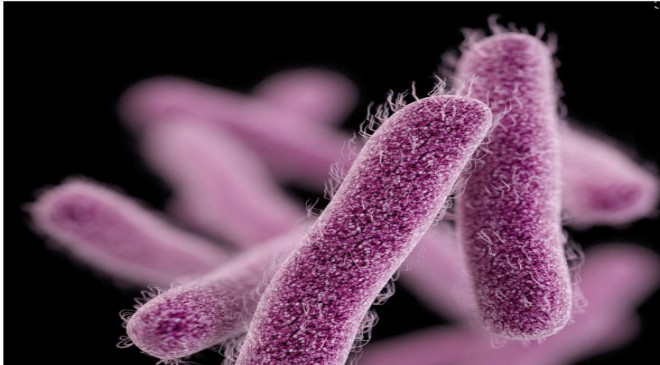Infections from a strain of drug-resistant shigella bacteria are on the rise in what the Centers for Disease Control and Prevention describes as a potentially serious public health concern.
Also Read– Millions who rely on Medicaid may be booted from program
Shigella bacteria is responsible for an estimated 450,000 infections each year nationwide and causes diarrhea or fever. The CDC issued a health advisory warning for a strain known as XDR, saying it’s a growing threat because it resists commonly-used oral antibiotics.
“It’s hard to put the genie back in the bottle,” said Dr. Aaron Glatt, an epidemiologist and chief of infectious diseases at Mount Sinai South Nassau. “We are going to be seeing strains here that are resistant to the commonly used treatments.”
‘Zombie ant fungus’ in humans? Climate change sparks fungi fears
What to know about Marburg virus: WHO confirms outbreak
What is shigella bacteria, shigellosis and its symptoms?
Shigella is a bacteria that causes an infection called shigellosis. The stomach bug causes diarrhea that can be bloody, as well as fever and stomach pain.
Symptoms typically start one or two days after infection and last about one week.
Also Read- Biden administration doesn’t want doctors prescribing controlled substances remotely
Antibiotics and treatment for shigellosis
Glatt said many people don’t need antibiotics to recover from mild cases. Most will need fluids and supportive care.
The CDC said antibiotics might be needed under the following reasons:
- To shorten length of illness by about two days
- To reduce transmission during outbreaks or in institutional settings
- For infected food handlers to prevent foodborne outbreaks
- For people with compromised immune systems or who are taking immunosuppressive drugs, such as people living with HIV
How does Shigella bacteria spread?
The bacteria spreads easily, according to the CDC, by people with an infection for several weeks after their diarrhea ends. You get infected by swallowing the bacteria, often by getting it on your hands and touching your mouth.
What’s different about the XDR strain?
About 5% of shigella infections were caused by the XDR strain in 2022. There were no known infections in 2015.
Also Read- New Mexico governor pans Forest Service amid wild cow fight
Doctors have “limited antimicrobial treatment” options for people infected with the XDR strain, which can resist more commonly-used antibiotics such as azithromycin, ciprofloxacin or ceftriaxone.
“This is a concern that there might be cases that won’t be so easy to treat,” Glatt said.
Rachel Jervis, an epidemiologist with the Colorado Department of Public Health and Environment, said her agency identified an outbreak of the drug-resistant shigella that began last summer. The infections spread among men through sexual and non-sexual contact, Jervis said.
“This outbreak is still ongoing,” said Jervis. “The number of cases being reported is slowing down. However, one of the challenges with with person to person disease transmission is ending an outbreak.”
The CDC warns XDR shigella can spread antimicrobial resistance genes to other bacteria, creating “potentially serious public health concerns.”
Who is at risk for XDR shigellosis?
The CDC has collected information on 232 patients so far and 82% were men, 13% women and 5% children. Only 41 patients answered questions about recent sexual activity. Of those, 88% reported male-to-male sexual contact.
While shigellosis mostly infects young children, the CDC said the antibiotic-resistant strains are reported more commonly in adults. The CDC said adults at risk include:
- Gay, bisexual, and other men who have sex with men
- People who are homeless
- International travelers
- People living with HIV
Also Read- Jill Biden to Namibian youth: Protect your democracy
With the rise in cases over the past two years, the CDC has asked doctors and other providers to be vigilant and report cases to local or state health department. Doctors who suspect such an infection are encouraged to ask patients about potential exposures, sexual activity, housing status and international travel.
Proper use of antibiotics
Glatt said the emergence of new strains like XDR highlights the importance of proper use of antibiotics.
“It’s not a benign thing to get an antibiotic and that’s the most important message,” said Glatt, a spokesman for the Infectious Diseases Society of America. “We want to reserve antibiotics for patients that really need it, and then reserve the right antibiotic for the right indication.”









































